Barbara Arrowsmith-Young
“I sometimes think if you have a vision, you just need to keep speaking it into the world until it comes to be.”
This week, on small talk, we had the pleasure of speaking with one of the greatest minds this world has known. Commonly referred to as ‘The Woman Who Changed Her Brain,’ we sat down with Barbara Arrowsmith-Young to chat about using intuition to find answers, forming our fate, and the future of education.
Barbara Arrowsmith-Young was welcomed into this world with evident disadvantages. She would later come to find that being born with multiple learning deficits were the cause of her seemingly inescapable difficulties.

“I knew something wasn’t going right since grade one. I could look at other students managing how to learn to read and write, and these were all an incredible struggle for me.”
With herself and her teachers having a strong sense that something ‘wasn’t quite right’ from very early on, Barbara was identified with having a ‘mental block.’
“This was the late 1950’s, so the term ‘learning difficulty’ didn’t even exist yet. Being rather literal, I thought that ‘mental block’ meant that I had a piece of wood in my head.”
With little to no understanding of her disadvantage and even less understanding of the curriculum, Barbara’s relationship towards school became that of fear and dread.

“Schooling was a struggle. My elementary school was right across from my house, staring at me through my living room window. Every day I’d walk out my front door and go to school, and I certainly didn’t skip there with joy; I kind of dragged my feet. I knew that it was going to be a struggle; I knew that it was going to be a challenge.”
In recognizing her great difficulty with comprehending elementary skills, Barbara’s mother created tools that would aid in her daughter’s ability to understand what she was being taught.
“My mother was an educator, and she designed flashcards that eventually helped me learn to read and write. But it didn’t address the learning difficulty; it was still there.”
Year after year of struggling, putting in overtime on tasks that fellow students effortlessly completed, and never truly feeling like she fit in, Barbara knew that the possibility of overcoming her obstacles would be in her own hands.

“My father was a scientist and inventor, and he had this belief and oftentimes said, ‘If you have a problem and currently in the world there’s no solution, it’s your responsibility to go out and hunt for a solution.’ He told me, ‘The rest of the world will tell you that you can’t do it, don’t listen because that’s how science and knowledge go forward.”
Keeping her father’s words of wisdom in mind, Barbara set off on a mission to find her solution, or better yet, create one.
“I had a spatial problem, so I was often getting lost and not knowing where I was going, and I had a reasoning problem, making it difficult to make sense of things, but I had this direction, this goal inside of me.”
In August of 1977 is when everything clicked. Barbara came across a book written by Alexander Luria, ‘The Man with The Shattered World.’ In his book, Alexander Luria tells the story and shares the journal entries of a Russian soldier, Zasetsky, who had a very localized head wound affecting part of his brain.

“I was reading Zasetsky’s journal entries, as he describes what was going on inside of his mind, and as I read this man’s journal, I thought, ‘we’re living parallel lives.”
Being unable to tell time, understand fractions, and grasp any form of relationship, Barbara related more with Zasetsky, a wounded Russian soldier, than she had with anyone before.
“I now knew what the problem was (the brain); the only thing left was to find a solution (the remedy).”
Rat Remedy
Because Neuroplasticity was a subject still uncommon in the ’70s, Barbara made it her mission to find the answers to her questions.
During this time, Mark Rosenzweig, coming out of the University of California, was conducting research and lab studies on rats' brains. His studies suggested that in giving rats stimulated environments, such as mazes, the stimulation, in turn, changed the physiology of their brains.
“He argued that stimulation led to physiological and functional changes in the brain, and that was my eureka moment. If rats could change their brains through stimulation, then surely humans could do the same.”
Feeling as if her long lost questions had been answered, Barbara excitedly brought forth her discoveries to her university professors. But her enthusiasm was unmatched.

“I was studying psychology at the time, and I went to talk to my professors about my findings, really quite excitedly. At first, they told me, ‘learning difficulties have nothing to do with the brain.’ And then they said, ‘even if they did, our brains are fixed and unchangeable.”
With professors caught in the old paradigm of ‘you get what you’re born with,’ (having a fixed and immalleable brain), the words of wisdom from Barbara’s father began to ring in her ears.
“I was raised with the belief that, ‘if there is a problem and the world is offering you no solution, then it’s your responsibility to find the answers.’ I was desperate, seeing no future for myself, so I thought, ‘what do I have to lose except for time?”
Becoming the Brain
Immersing herself into the pages of Luria’s work, Barbara began feeling her way through what exercises she could create that would be needed to stimulate the areas of her brain that were ‘offline.’
“Somehow, I felt my way, from Luria’s description, into those parts of the brain. It was some sort of right-hemisphere intuitive process, mixed with a drive, determination, and desperation that allowed me to create this work.”
With relentless devotion to her experimental exercises, Barbara found that she was able to tell time, hold conversations, and process relationships over time. Something she never had the ability to do before. This meant that her findings had very impactful and promising results.
“I thought, ‘I want to take this work out into the world and help other people who may have the same challenges that I was faced with,’ and that was really the start of my work which led to Arrowsmith School.”
Arrowsmith School
Through Barbara’s tireless devotion and passion towards truly becoming the brain and understanding the roles different regions and networks of the brain play, added to her compassionate understanding of what it feels like to go through life in a state of confused chaos, Arrowsmith School was born.
Arrowsmith is a unique cognitive strengthening program dedicated to helping students struggling with learning difficulties.
Being used in over 90 educational organizations and ten countries worldwide, it is safe to say that Barbara’s vision and impact have stretched both far and wide.

“We have students now all around the world, from first graders to adults, coming into virtual classes and improving their brains.”
Offering a series of courses and learning programs that address 19 different cognitive functioning of the brain, to students of all ages, all over the world, Barbara’s vision of the Arrowsmith School has truly exceeded expectations.
And the good news? It’s just beginning.
“My vision is, starting in grade one, students do 30 minutes a day, five days a week, of cognitive exercise. It would become a standard addition to the curriculum in schools worldwide.”
Barbara has been testing her hypothesis throughout schooling systems in North America, Europe, and Australia, believing that if students were to incorporate cognitive exercises into their schooling practices, underperforming areas of the brain would begin to improve in time.

“One of the studies we did was in Australia with grade 1 classes. One class did 30 minutes a day of my cognitive program, while the other just did 30 minutes of standard writing. We pre-and post-tested them and came to find that the group partaking in my exercise improved by 85 %, while the other groups only improved 10%-40%. Change the curriculum, and we can change the brain.”
With plans from grade 1 all the way through the elementary grades, Barbara believes that in integrating her cognitive exercises into school rooms, students will not only enhance their strengths but thrive in areas where they once experienced weaknesses.

“So, that’s my future vision. That every student will attend school not to strengthen their academics, but to strengthen their brains. There will be no stigma to having a learning difficulty because every child will be working on these different cognitive functions, and every child can benefit no matter where you are in the continuum.”
When Barbara first released her book, ‘The Woman Who Changed Her Brain,’ in 2012, she shared her ambition within the pages, but she was convinced that this kind of progression wouldn’t be seen in her lifetime. Yet, here we are, almost 10 years later, and Barbara has not only predicted the future of what the schooling system could be but has helped in shaping it.
“I sometimes think if you have a vision, you just need to keep speaking it into the world until it comes to be.”
Gift of Giving
They say that giving is the greatest gift that we can receive, and in freeing others, we ourselves become free.
For Barbara, nothing could be closer to the truth.

“Meeting the students that this work has impacted is truly my greatest joy. Seeing students’ progress and being able to break through these blockages that I, myself, once knew all too well, is unexplainably gratifying.”
Seeing her students' transformation has left Barbara speechless on more accounts than she can recall. And we don’t blame her. To look fear dead in the eyes and take a hopeful step towards the possibility of a prosperous future takes courage, bravery, and fearlessness.
“We’re working on all of the hard stuff, facing the real-life struggles and difficulties. All of the students around the world share a commonality in our experiences. To hear their stories, and witness their courage, is why I started in the first place, and I honor each one of them.”
From fearless students to their parents, fighting tirelessly for their children’s futures, Arrowsmith School has created a global family of hope filled warriors.

“I will never, ever, get tired of it because my story is their story.”
Silently Suffering
Many of us may have loved ones or close companions who might be struggling with a learning deficit themselves. Knowing how to be there and how best to support oftentimes may come as a challenge. To this, Barbara says that the answer lies in communication.
“The thing that I would’ve liked in my life would’ve been to have an open dialogue. There should be no stigma or shame in learning difficulties. The first step is being vulnerable and honest enough to have an open conversation.”
It takes even more effort to hide or attempt to cover up our challenges and our difficulties than it does to reach out and ask for help. What seems hard at first, in time, will prove valuable and beneficial to all parties if open communication and a willingness to understand is offered.
As mentioned in our interview with Roger Gabriel, it starts with being honest with ourselves and being honest with others.

“It starts with a conversation which leads to finding a solution.”
Strength in Stumbling
Barbara Arrowsmith-Young turned pain into purpose, finding strength within her struggles. With so much pain in the world right now and uncertainty at its highest, we as a collective must begin to use our hardships as opportunities for growth, expansion, and contribution.
This doesn’t sound easy, but it can be as simple as flipping a switch.
“I think it comes down to having an open-mindset. It sounds straightforward, and I recognize it can be more complicated than it sounds. But, if we can somehow ‘flip the switch,’ to see things from a new perspective, we would open ourselves to greater opportunities.”
Being open and willing to adapt and expand, no matter the circumstances, is a valuable trait that serves both ourselves and the world around us, especially in times such as these.
“I think that the answers lie in not denying the challenges and grief that goes along with them, but asking ourselves if there is a chance to open alternate doorways.”
Best Advice?

“The best advice I’ve ever received was from my father, and he said, ‘don’t be limited by conventional wisdom.’ Which to me means, don’t listen to the naysayers. There are lots of people in the world who will say that you can’t do something, but if you’re committed and passionate, go for it!”
No longer pursue?
“I think I’m kinder to myself. I used to think if I wasn’t working all the time, I was doing something wrong. But in being kinder and more compassionate to myself, I’ve allowed myself space to slow down and accept what is.”
100% True?
We asked Barbara Arrowsmith-Young what she knows 100% to be true, her answer;

“I believe one hundred percent in the power of the human spirit. I am simply in awe of the power of the human spirit; it is boundless.”
At TrooMe, we believe that nothing can outshine one’s true essence and expressed spirit; there is simply nothing mightier.
May we follow in Barbara Arrowsmith Young’s footsteps, opening up space for compassionate communication, creating a way when there seems to be none, and dreaming as far and as wide as we can.
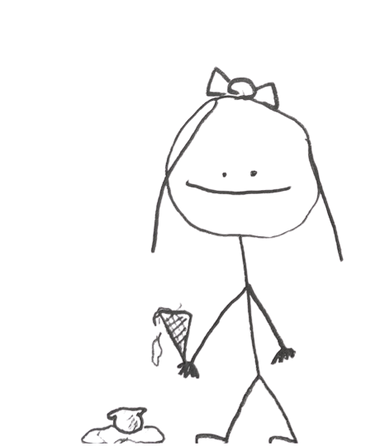
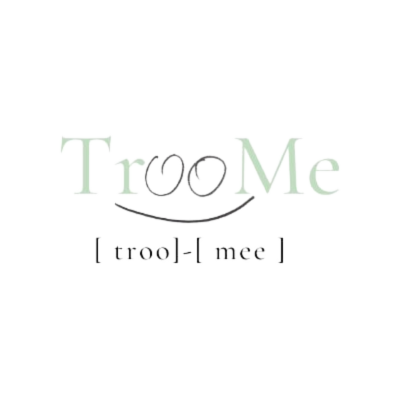
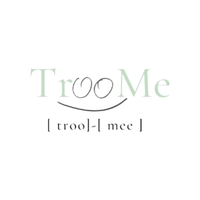

Sharon – You are so right. Can you imagine what the world would look like if all, or even most, people could remember and understand what they read, hear, and see? What would our lives be like if we all understood cause and effect, our own and other people’s emotions and body language and thought before we acted?
What Barbara has discovered should change the way we think about our lives and the way we organize education and curriculum.
I am totally convinced that this is the program our schools need to adopt. My concern is for a connection in my city.
Leave a comment